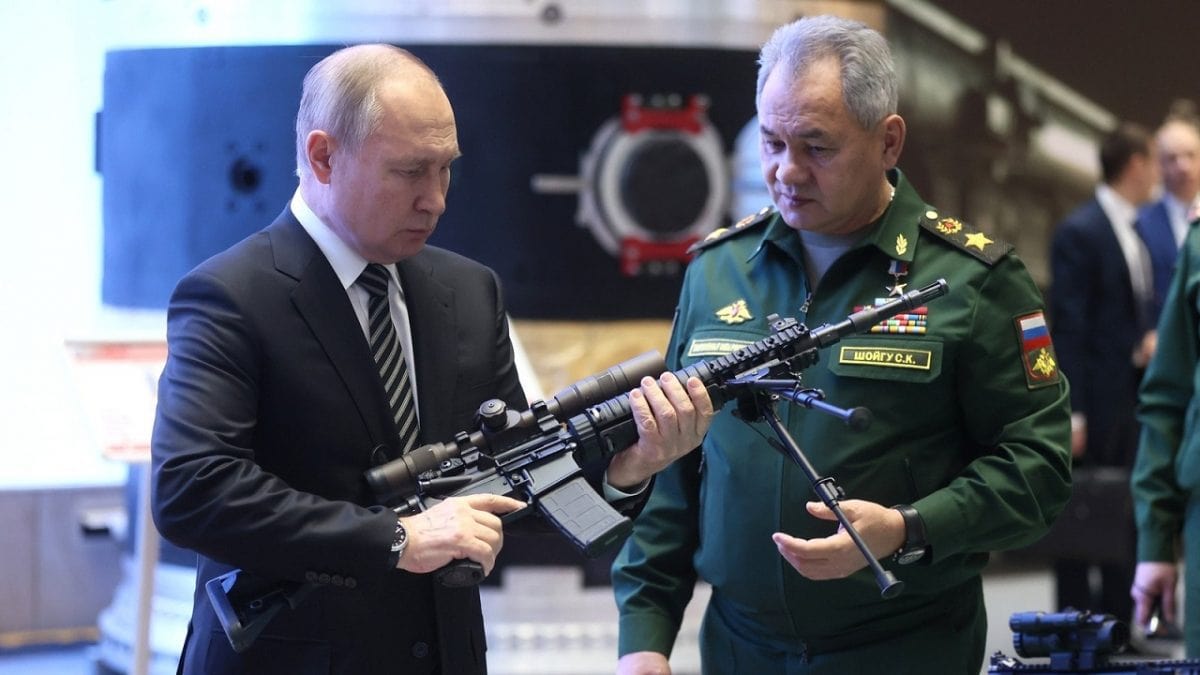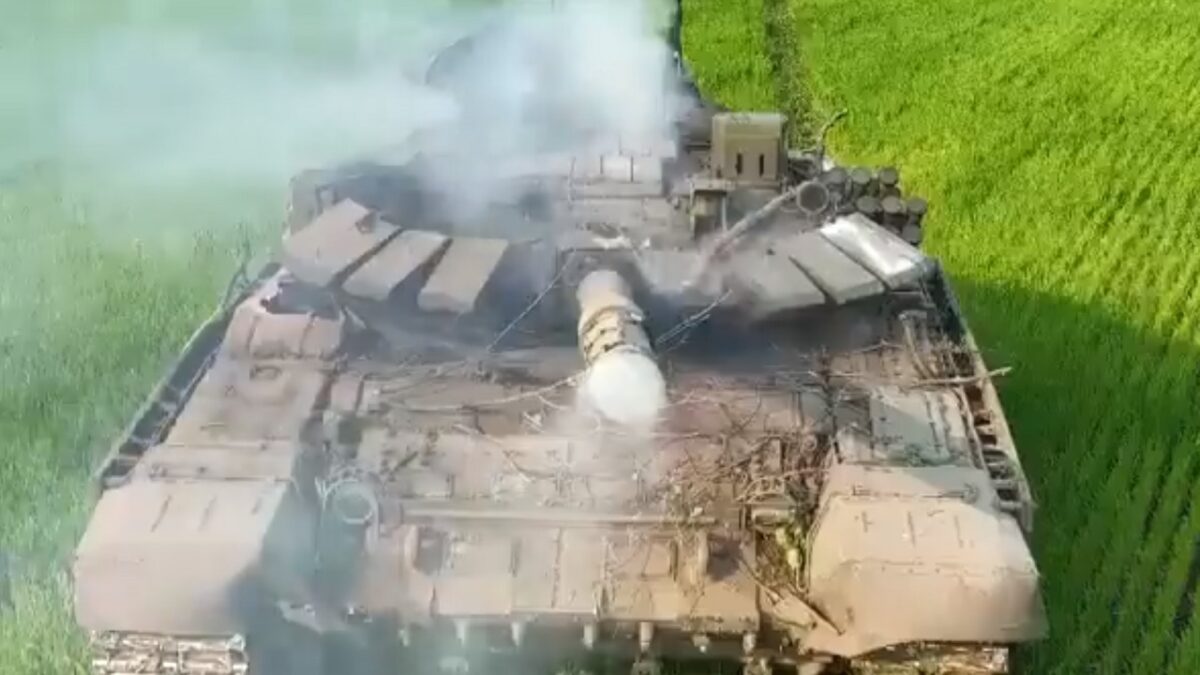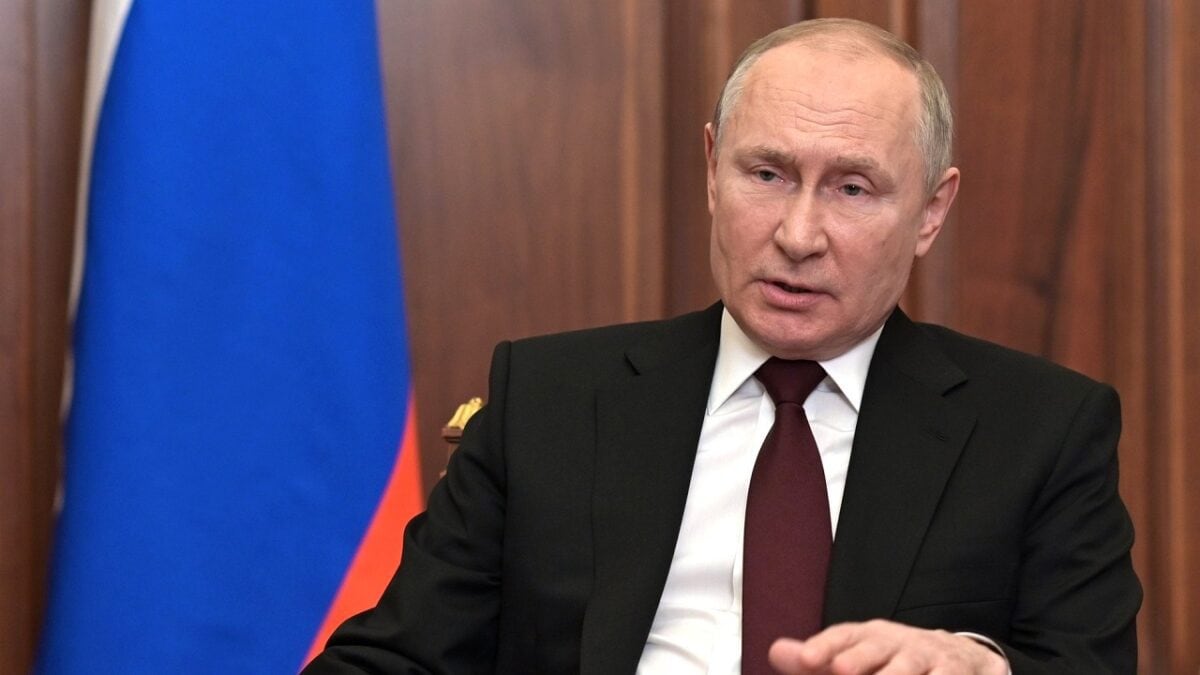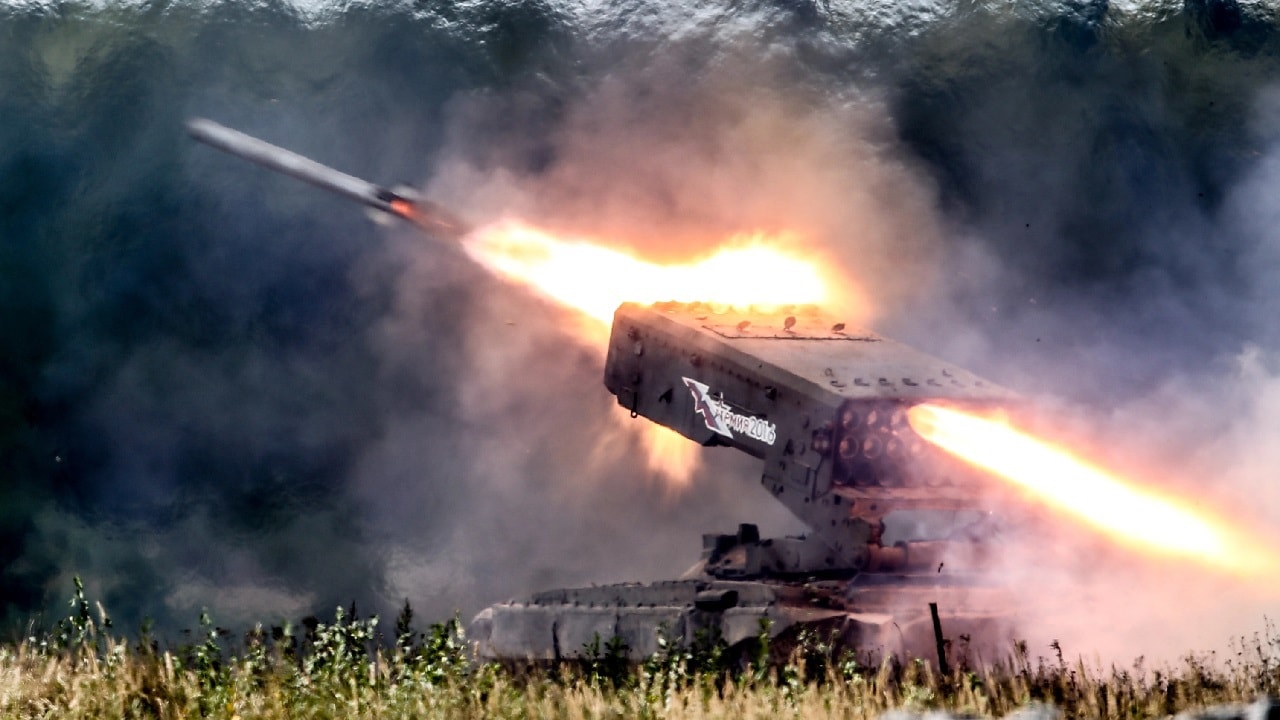Putin’s Looming Winter Offensive Poses Real Danger to Ukraine: On Tuesday morning, Ukrainian president Volodymyr Zelensky addressed the G20 and mocked Russia by laying out a 10-point peace plan that was little more than a demand for unconditional surrender by Moscow. On Tuesday evening, Russia answered with a barrage of missiles attacking the energy infrastructure of dozens of Ukrainian cities that may be the most devastating missile attacks of the war. That barrage may well prove to be merely a foretaste of Russia’s winter offensive to come.
(Watch the author of this piece, RET. LT. Conolel Daniel Davis on NBC News discussing this article.)
Putin’s Winter Offensive Against Ukraine
Ukrainian authorities are claiming yesterday’s strikes have caused massive energy outages across the country, and that “the (energy) situation is critical.” These latest attacks struck the energy systems of Ukraine’s major cities (that had already been reduced by 40%) since Putin began attacking the country with sustained missile attacks following the Ukrainian attack on the Kerch Bridge connecting Crimea to Russia.
In all probability, these latest strikes were both an immediate Russian response to Zelensky’s speech at the G20 – and to set the stage for the coming winter offensive.
In an analysis published here last week on Ukraine’s victory in Kherson, I promised to present an assessment of possible objectives Putin may set for his looming winter offensive composed of more than 200,000 new troops.
In general, there are three main possibilities:
Option 1) Minimalist Objectives:
Putin uses his newly mobilized troops to backstop all Russia’s current frontline positions in Ukraine and hopes to cement territorial gains into permanent Russian possessions;
Option 2) Limited Objectives:
Putin will attempt to use his new formations to complete the conquest of the entire Donbas and return over the Dnipro River to retake Kherson and the remainder of the Kherson oblast.
Option 3) Hi-Risk/Hi-Reward:
Putin does not seek half-measures and strives to force the Zelensky government to capitulate on Moscow’s terms by engaging in all-out war.
Each option has its own pros and cons from the Kremlin’s perspective and each represents unique dangers for the Ukrainian state. Though as Zelensky reiterated on Tuesday, Ukraine publicly seeks to completely eradicate Russia from its territory. That stated intent may be one of the factors that determines which of the three course of action Putin may choose. Below I will briefly look at options 1 and 2, as both are fairly straight forward and would, frankly speaking, be the least of the bad options for Ukraine.
I will then spend much more space detailing the most dangerous course of action Putin could choose. Evidence is starting to pile up, however, that option 3 may also be the most likely. It is instructive, therefore, to both the West and Kyiv’s authorities to consider the potential of an all-out Russian assault on Ukraine now, while there is still time to avert the worst of the violence through diplomacy.
It must be admitted up front, however, that any negotiated end to the war will necessarily involve ceding some territory to Russia. The alternative, however, is to seek the complete return all lost Ukrainian territory, Kyiv continues to refuse to negotiate and, in the process, loses far more territory than might be surrendered if a deal could be reached before Russia launches its winter offensive. I fully acknowledge that only Ukraine can make such a call. Here, however, is what they may face if they choose to hold out to regain all their territory by continuing to fight.

Russian President Putin with Russian Military Forces. Image Credit: Creative Commons.
Option 1): Minimalist Objectives: What Would Putin Do?
In this option, Putin uses his force, enhanced by the increase of 300,000 mobilized reservists, to prevent any further Ukrainian advances by sending large numbers of troops to bolster the Russian lines from Kharkiv region in the north, to the Donbas in the center, and in the Kherson/Zaporezhia fronts in the south.
Russian forces begin to dig in all along the current 1,000 mile long line of contact separating the warring sides. Newly arrived Russian troops will immediately add considerable firepower to the defense of each front, significantly adding a deterrent to any further Ukrainian advances. Last week Pentagon officials reported Ukraine was averaging firing 7,000 artillery rounds per day against Russia, but admitted Putin’s troops were sending up to 20,000 back.
Russia could literally double that amount of firepower in a winter campaign by stuffing the defense with hundreds of additional howitzers and rocket launchers, which would make it nearly impossible for Zelensky’s troops to successfully attack beyond current lines. Putin’s objectives would be to freeze the conflict where it is, effectively turn the land his troops currently occupy into de facto Russian territory, and over an extended time seek to make the partition recognized by the majority of the world.
While Russia could achieve these near-term objectives with relative ease – the battle lines have been fairly static over the past month while Russian troops have been outnumbered by their Ukrainian opponents. Essentially doubling the number of Russian troops and firepower would produce an advantage for Putin’s force that couldn’t be overcome until much time had passed.
Yet for that reason, this may be the most unlikely course for the Russian president to choose: in time, the Ukraine side would be free to build up its strength, add potentially hundreds of tanks and howitzers of their own, and even if a year or more later, launch new offensives that might successfully drive Russian troops out. This option solves a near-term problem for the Russian forces (stopping the current Ukraine advances), but it bakes in medium and long-term vulnerabilities, without providing a rational path to conflict resolution on terms acceptable to Moscow. Thus, Putin likely won’t select this course of action.

Video screenshot of a Russian T-72B3 tank on fire and a second decapitated tank by Ukraine’s 93rd Mechanized Brigade.
Option 2): Limited Objectives: Take Back All of Donbas?
In this scenario, Putin will seek limited military gains by engaging in efforts to complete the capture of the entire Donbas (including all of Donetsk and Luhansk territory), the Zaporezhia region, and launch a major operation to return back across the Dnieper River to re-take Kherson city and conquer the remainder of the Kherson region. He would allocate 45% of his mobilized forces for the Donbas offensive, 45% for the Kherson offensive, and retain 10% for a mobile reserve (to reinforce success or increase pressure if his forces stumble in either direction).
Along with the approximately 200,000 Russian troops presently fighting in Ukraine, Putin’s generals would have more than 400,000 troops to try and gain those limited objectives, which would not be guaranteed but definitely possible. One of the key challenges would be that the Ukrainian troops have spent months preparing hardened defenses throughout the depth of their side of the Donbas front.
The same effective defense Zelensky’s forces have been conducting since February there and have prevented Russia from winning the Donbas would remain a formidable obstacle, even with the inclusion of 75,000 or more new Russian troops. To continue to plow into the teeth of the Ukrainian defenses would extract an enormous casualty toll on the attackers, and still not guarantee success; the Ukrainian Armed Forces (UAF) have become highly skilled at defense.
Meanwhile, even the drive to reconquer Kherson city would be fraught with difficulties. The same major obstacle of the Dnipro River that presently keeps Ukraine from crossing to the west to continue its offensive against Russian troops would likewise pose a major challenge to any Russian attempt to force the issue back to the west. The Ukraine side no doubt has already begun to build a new system of elaborate defenses in depth on their side of the Dnipro to make any Russian return inordinately costly.
Thus, this course of action would be high risk/low reward for Putin, as he might, with concerted effort, conquer all the Donbas, but may not be able to cross the Dnipro River and thereby fail to reconquer Kherson city. Even if eventually successful in both objectives, Putin’s forces would suffer egregious casualties that could match or exceed all they’ve suffered in the first nine months of the war.
If Putin tried anyway and was successful in taking both objectives, he would then be in the same position described in Option 1 above, whereby he would have a relatively secure line covering the four territories he illegally annexed in September, but that gain would be temporary and short-term, as again, Zelensky would be free to build up his forces for a certain future counteroffensive.
What Will Putin Do in Ukraine This Winter?
Putin would likely reject both options 1 and 2 for the same ultimate reason: even a successful tactical operation would come at great cost in blood and treasure yet prove to be a short-term and temporary victory. It would not solve his problem of securing Russia’s western flank from the threat he perceives from NATO and would virtually guarantee a future offensive from Zelensky that would likely be his most powerful to date. Then there are the domestic concerns.
Up to this point, it appears the Russian public is willing to give Putin the benefit of the doubt, despite his failures to win the war at the outset, the reverses in Kharkiv in September and the loss of Kherson this month. Russian public opinion – even the grumbling Russian hawks – are willing to wait and see how the promised winter offensive plays out.
However, if Putin fails to win the war, fails to secure Russian territory, and doesn’t vanquish the Ukrainian military threat on this border, it is possible his current approval rating of 79% will evaporate. In such a case, it would be very unlikely for the Russian people to accept another mobilization in the hundreds of thousands (which would be required to meet the certain Ukrainian offensive that would eventually follow). Vladimir Putin would be at serious risk of being forced to resign, driven from power via a coup, or possibly even losing his life in an assassination.

Russian President Putin addressing the nation.
The most likely case, therefore, the most reasonable expectation given the current state of the war and the options available to the Russian leader, is for Putin go order his generals to execute option 3: all-out war to destroy Ukraine’s ability to threaten Russian territory or interests.
On the surface, it might seem beyond question that if Russia couldn’t successfully accomplish the lesser challenging options 1 or 2, that option 3 would be the most unrealistic and least likely of all. That is certainly conventional wisdom today, yet as we will begin to reveal in the next part of this analysis, the Russian military poses a much greater danger to the viability of the Ukrainian state than is commonly recognized.
Also a 19FortyFive Contributing Editor, Daniel L. Davis is a Senior Fellow for Defense Priorities and a former Lt. Col. in the U.S. Army who deployed into combat zones four times. He is the author of “The Eleventh Hour in 2020 America.” Follow him @DanielLDavis.
Note: This has been updated to include an interview by NBC News with the author of this piece.

